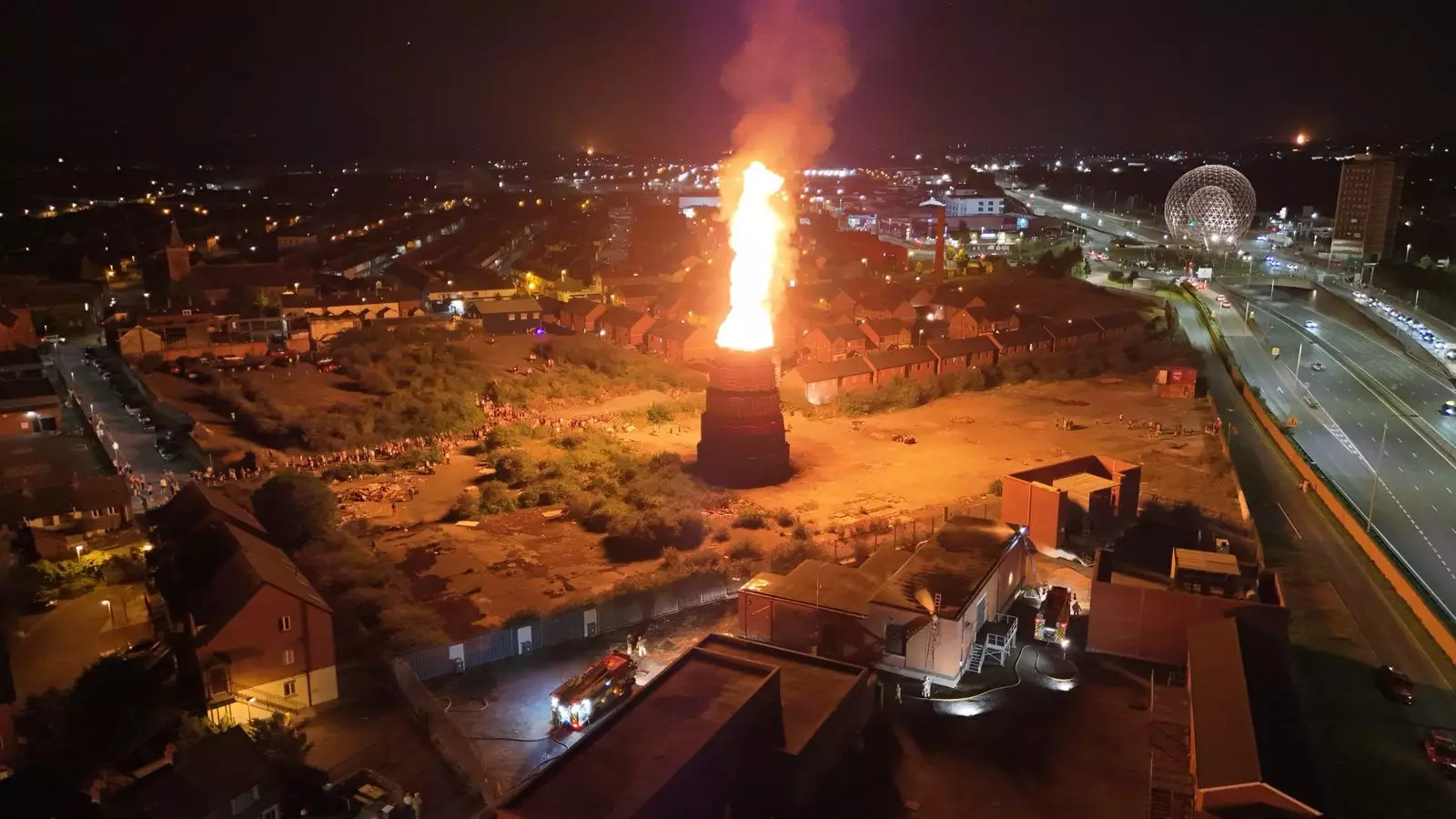Every year, communities across Northern Ireland rally around the ritual of lighting bonfires, particularly on the Eleventh night leading up to the 12th of July. These gatherings, often tinged with cultural pride, have transformed into spectacles that mask underlying risks. Despite the idyllic image of communal celebration, these fires pose significant threats—not only to public safety but also to social cohesion. The recent surge of emergency calls, with firefighters attending to over 70 bonfire-related incidents within a single night, underscores the perils that such seemingly benign traditions can bring when left unchecked.
The sheer volume—approximately 300 bonfires lit across the region—reveals a disturbing tendency to prioritize tradition over safety. While many of these fires are peacefully ignited, a closer look reveals a reckless disregard for environmental safety and public health, especially when illegal and hazardous sites are involved. The incident at the site containing asbestos is particularly alarming, exposing underlying systemic failures and the dangerous normalization of risk in the name of cultural expression. It’s a stark reminder that tradition, when unregulated, becomes an excuse for hazardous behavior cloaked in cultural identity.
Environmental and Public Health Dangers: An Ethical Dilemma
The deliberate ignition of bonfires on sites contaminated with asbestos not only demonstrates a blatant defiance of legal safeguards but also presents a serious environmental disaster. Asbestos, a known carcinogen, becomes airborne during burning, threatening residents’ health—especially the vulnerable, including children and hospital patients relying on nearby power sources. The government’s inability or unwillingness to prevent such reckless actions raises questions about the adequacy of safety priorities relative to cultural practices.
The issue becomes even murkier when political and community tensions intertwine with these celebrations. The lighting of a bonfire near a hazardous asbestos site—despite clear warnings from environmental and safety authorities—reflects a divisive stance that undermines collective responsibility. It signifies a defeatist attitude: that cultural rights outweigh collective safety concerns. Politicians and regulators appear ensnared in a paradox where maintaining tradition trumps the ethical obligation to protect citizens from preventable harm. Such decisions threaten to tarnish the very cultural identity they aim to celebrate, fueling mistrust among communities and critics alike.
Provocation and Polarization: Fueling the Fire
Beyond environmental dangers, some bonfires and their associated effigies or banners have become symbols of provocation and division. Effigies depicting political opponents, controversial slogans, or provocative imagery are often burned, inflaming tensions rather than healing divisions. The burning of a migrant-themed effigy or inflammatory posters targeting political groups exemplifies how some participants use these events as platforms for provocative messages, which only deepen societal rifts.
This aggressive display is not just harmless expression but a calculated act that undermines communal harmony. It bridges the gap from cultural tradition to political statement, often escalating tensions in already divided communities. The use of bonfires as a battleground for identity politics transforms a community festival into a flashpoint for conflict. This transformation highlights a dangerous trend where tradition is weaponized, undercutting the very aim of cultural celebrations meant to foster community.
The Burden of Authority and the Role of Society
The response of authorities—police, environmental agencies, and community leaders—has been reactive, often strained and limited in scope. The deployment of thousands of police officers during sensitive parade routes indicates the perceived threat these events pose to civil peace. Yet, mere surveillance and emergency response do little to address the root causes: a lack of proactive regulation and community engagement.
Society bears a collective responsibility to challenge the normalization of these dangers. Rituals that threaten health, safety, and social cohesion cannot be justified by tradition alone. A responsible approach would involve engaging communities in dialogues about safer ways to express cultural identity. This is not about erasing tradition but about transforming it into an expression rooted in respect for public health and social harmony. The persistent insistence on lighting bonfires at hazardous sites, and the acceptance of provocations, signals a troubling indifference to the broader societal consequences.
By romanticizing these dangerous acts, society risks perpetuating a cycle of harm—a cycle that ultimately undermines the very values of community and cultural pride it seeks to uphold. Reform, transparency, and genuine dialogue are essential steps forward, yet current attitudes seem mired in complacency and a stubborn insistence that tradition justifies perilous actions. Society must critically re-examine what it stands for, and whether such perilous displays are worth the potential costs.


Leave a Reply